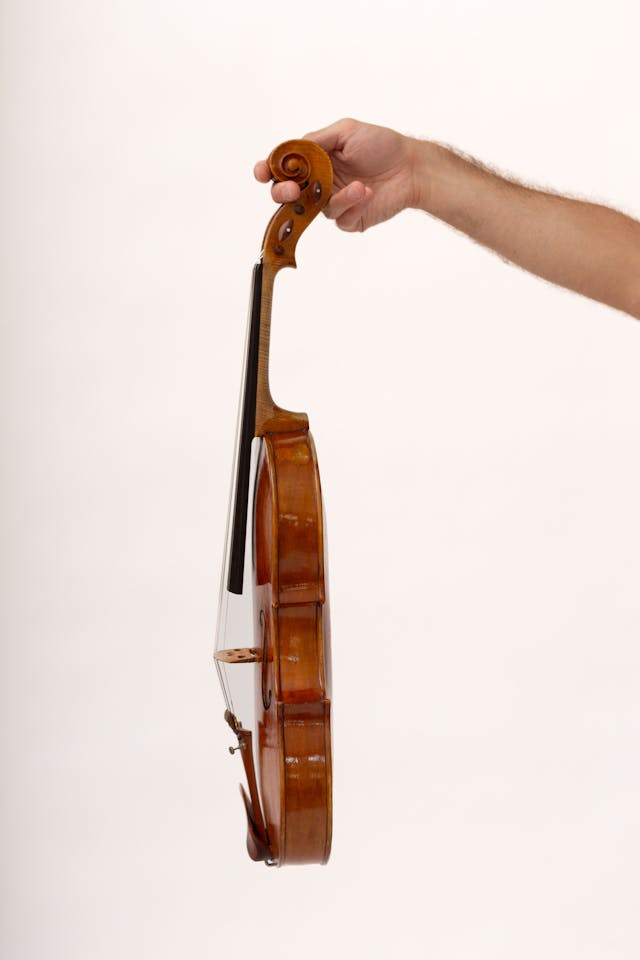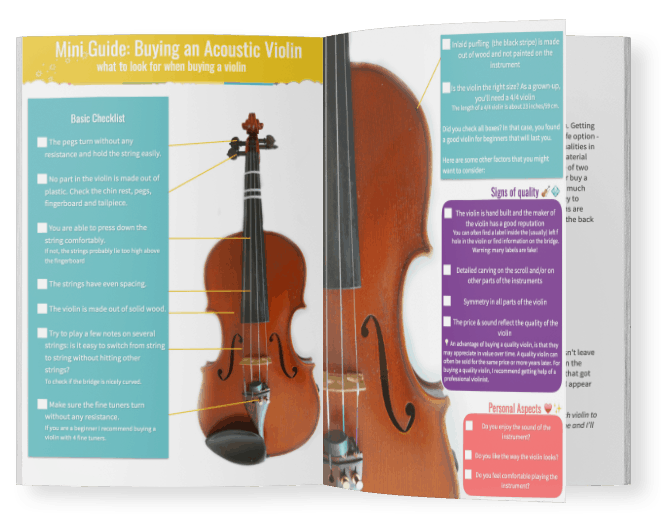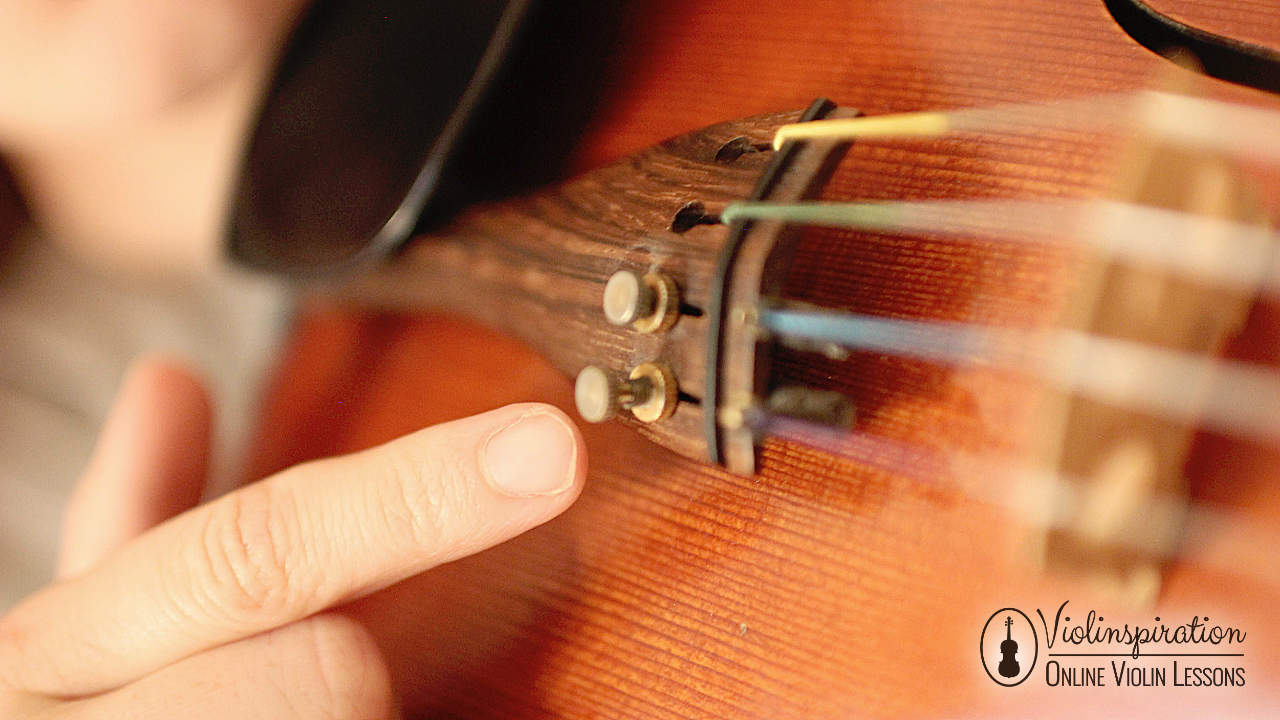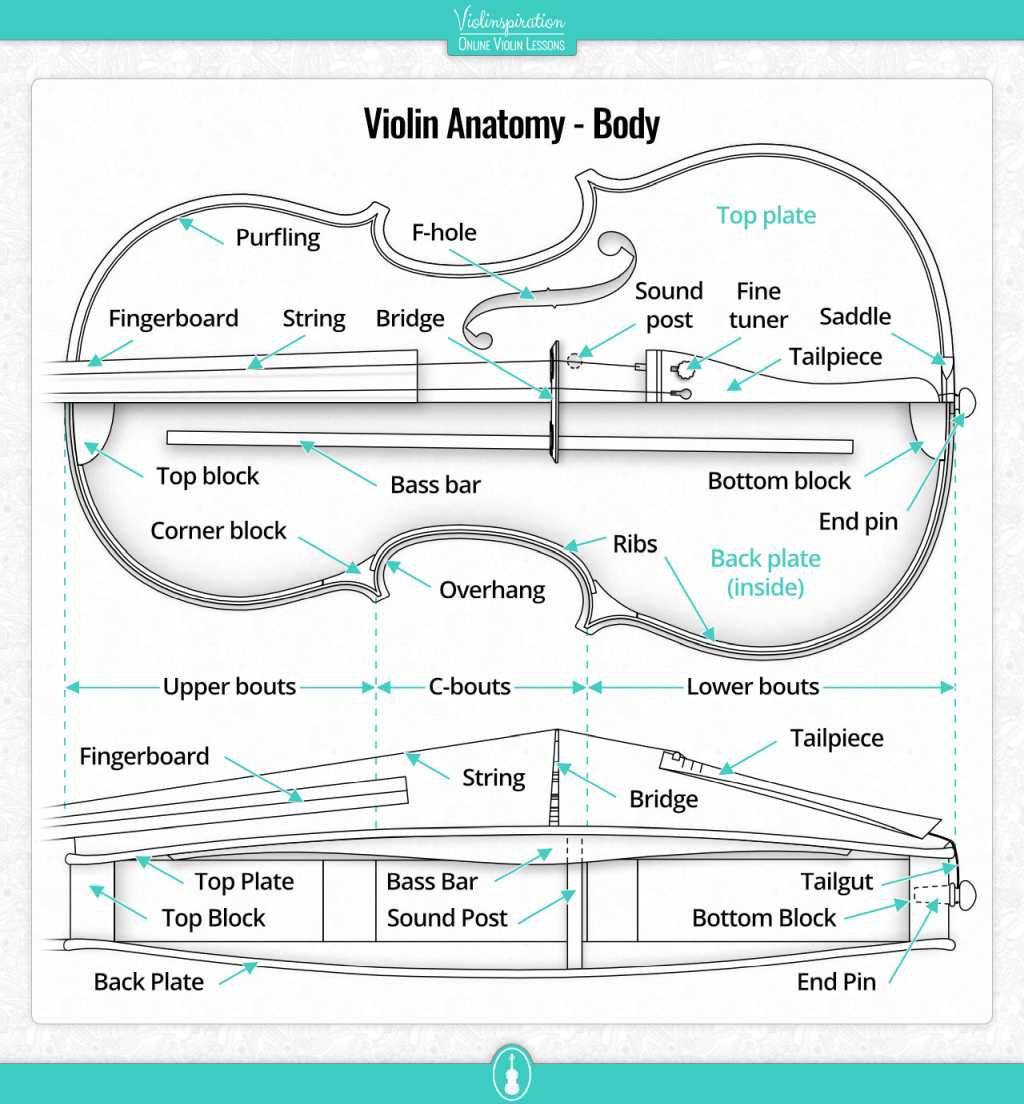Answering “How much does a violin weigh?” and other violin-related questions.
When choosing a violin, so many players focus on sound quality, craftsmanship, and playability, but weight is another important factor to consider. While it might not seem significant at first, the weight of a violin can have a surprising impact on both comfort and performance.
Whether you’re a beginner or a professional musician, classical music player or a fiddler, understanding how much a violin typically weighs and what factors affect its weight can help you make a more informed decision when choosing one.
Today, we’ll talk about the average weight of a violin, how it may vary, and why it matters for your playing experience.
How much does a violin weigh?
A full-size acoustic violin weighs, on average, 400-500 grams (14-17 ounces, or around 1 pound) with the chin rest but without a shoulder rest. An electric violin can be of the same weight or be even about twice as heavy!
Since acoustic stringed instruments are handcrafted, each violin will have slightly different measurements between the total weight, body length, and wood quality. Violin makers will also craft instruments based on different models, which can also lead to various weights, shapes, and acoustic properties.

The biggest aspect that can change the weight of an acoustic violin is wood density. If the wood is dense, the violin will be heavier, and if the wood is more porous, it’ll weigh less. The most common woods used in violin making are spruce, willow, maple, ebony, and rosewood. The top plate is usually made of spruce, and the backplate is maple.
Moreover, student violins tend to be a little heavier, while nicer violins are on the lighter side.
When it comes to electric violins, the design matters a lot! Also, the electronics might include LEDs and a battery which affects the total weight of the instrument. Watch this video to see a weight comparison of different electric violins:
How much do violins weigh compared to other stringed instruments?
The acoustic violin is the smallest instrument in the string family and is therefore the lightest.
Violas vary largely in size and shape, and therefore the average weight has a larger range. The average viola weight is between 500-700 grams (17-25 ounces or 1-1.5 pounds).
The cello is much larger and typically weighs in at around 3 kilograms (105 ounces or 6.5 pounds).
Finally, the double bass is the largest and heaviest instrument in the string family and generally weighs between 9-11 kilograms (20-25 pounds)! They’re not nearly as portable as the violin.

Does the weight of my violin matter?
Since the acoustic violin is small and relatively light, the change in weight between different violins can be very minimal. However, after playing for a while, violinists can notice very small differences in weight. Have you ever tried playing with a different bow that felt just a little heavier or lighter? The difference was probably only a couple of grams, but you can feel the change!

The weight of a violin can affect your playing in several ways:
Comfort and Endurance
Lighter violins are usually easier to hold for extended periods, which is important for long practice sessions and performances.
Heavier violins may cause discomfort and strain, especially for beginners and smaller players.
Even if you have a light violin but use a heavy shoulder rest, you may start to notice discomfort. Always keep your accessories in mind if you’re unhappy with the weight of your instrument! Try to find the weight of any shoulder rest you’re planning to buy and compare it to your current model to get a better understanding of whether or not the new accessory will help you.

Playability
A lighter violin can promote greater agility and quicker movements while playing, helping you perform fast, technical passages.
A heavier violin can be harder to maneuver and feel less responsive, causing your fast technical passages to sound sluggish.
Tone and Resonance
The weight of a violin can also affect its resonance and sound projection.
Lighter violins can vibrate more freely, creating a brighter and more resonant tone. Heavier violins, especially those made with denser wood and heavier varnish, can absorb some of the vibrations from the four strings. This creates a warmer but less resonant tone.
Personal Preference
Just like we all have our favorite shoulder rest (or lack thereof), every musician might like an instrument that weighs more or less than another’s.
Some violinists might prefer a lighter violin for the ease of playing, while others might prefer a heavier instrument for the darker sounds. Some players may opt for a lighter instrument after experiencing an injury due to a violin that was too heavy for them.
It’s all personal preference, and it can take time to find a violin that has the right weight, sound, and setup for your tastes. While you’re looking for the best violin for your needs, you can use my free checklist:

Get Your Free
Violin Buying Checklist [PDF]
Is the violin heavy?
Violins aren’t particularly heavy–weighing in at around a pound or a half of a kilogram–but it’s normal to feel some discomfort and tiredness after playing or performing for long stretches.
If your violin feels too heavy and has been bothering you, you have a few different options.
First, take a look at your shoulder rest, if you use one. Hold the shoulder rest by itself: is it heavy? Some shoulder rests are much heavier than others, and it can affect your playing and overall comfort level. Try experimenting with a different, lighter shoulder rest, and see if it helps!
Sometimes the fine tuners add a great deal of weight to an otherwise light violin. If you don’t mind only using the pegs to tune, you can take the fine tuners off, or you could swap out your current set for a lighter one.

Some violins are just naturally heavier than others. If you’re unhappy with the weight of your violin and the shoulder rest doesn’t seem to be a problem, you may want to shop around for a different violin. I usually compare the weight difference between two instruments by holding one in each hand. If you’d like to be more precise, you might want to try weighing the violins.
If a new violin doesn’t interest you or isn’t in the cards but you deal with a sore left arm after playing, you may want to try small weight exercises. Even just lifting a 2-pound weight can strengthen your arms enough to comfortably hold the violin for longer periods.
How much does a violin bow weigh?
Violin bows vary in weight as well, and using a bow with a different weight can change how you play.
The average violin bow weighs around 60 grams (2 oz). Viola bows weigh around 70 grams (2.5 oz), cello bows at 70 grams, and double bass bows weigh between 130-150 grams (4.5-5.3 oz).
A lighter violin bow can help you play staccato bow strokes and can help you play more nimbly. A heavier violin bow will give you a richer sound but can be a little harder to maneuver.
How much does a violin case weigh?
Average violin cases weigh anything between 2-4 kilograms or 5-8 pounds without the violin. Lighter cases tend to range from ca. 1.2-2.7 kilograms or 3-6 pounds.
If you have a heavy violin and plan to transport it often, you may want to look for a lightweight case to make your commute a little easier.

Learn More
The average full-size acoustic violin weighs around 400 to 500 grams, but various factors such as the type of wood, fittings, and finishing can influence that overall weight. Although the difference in violin weights sounds small on paper, it can greatly affect how comfortable your instrument feels during long practice sessions and performances.
Choosing a violin that is well-suited to your playing style and physical needs is essential for ensuring both ease of use and optimal sound quality, and I hope this article has helped you understand what’s best for you! If you’re looking for a new violin, download my free Violin Buying Checklist:

Get Your Free
Violin Buying Checklist [PDF]
Interested in learning more about the mechanics of the violin? I suggest reading about the violin bridge or the violin f-hole next! And, if you’d like to learn more about the violin itself, make sure to read What is a Violin Made Of?
Free Violin Sheet Music in Your Inbox
Subscribe to my mailing list to receive free sheet music, playing tips, a weekly portion of motivation, and never miss a new video or course I release!

























